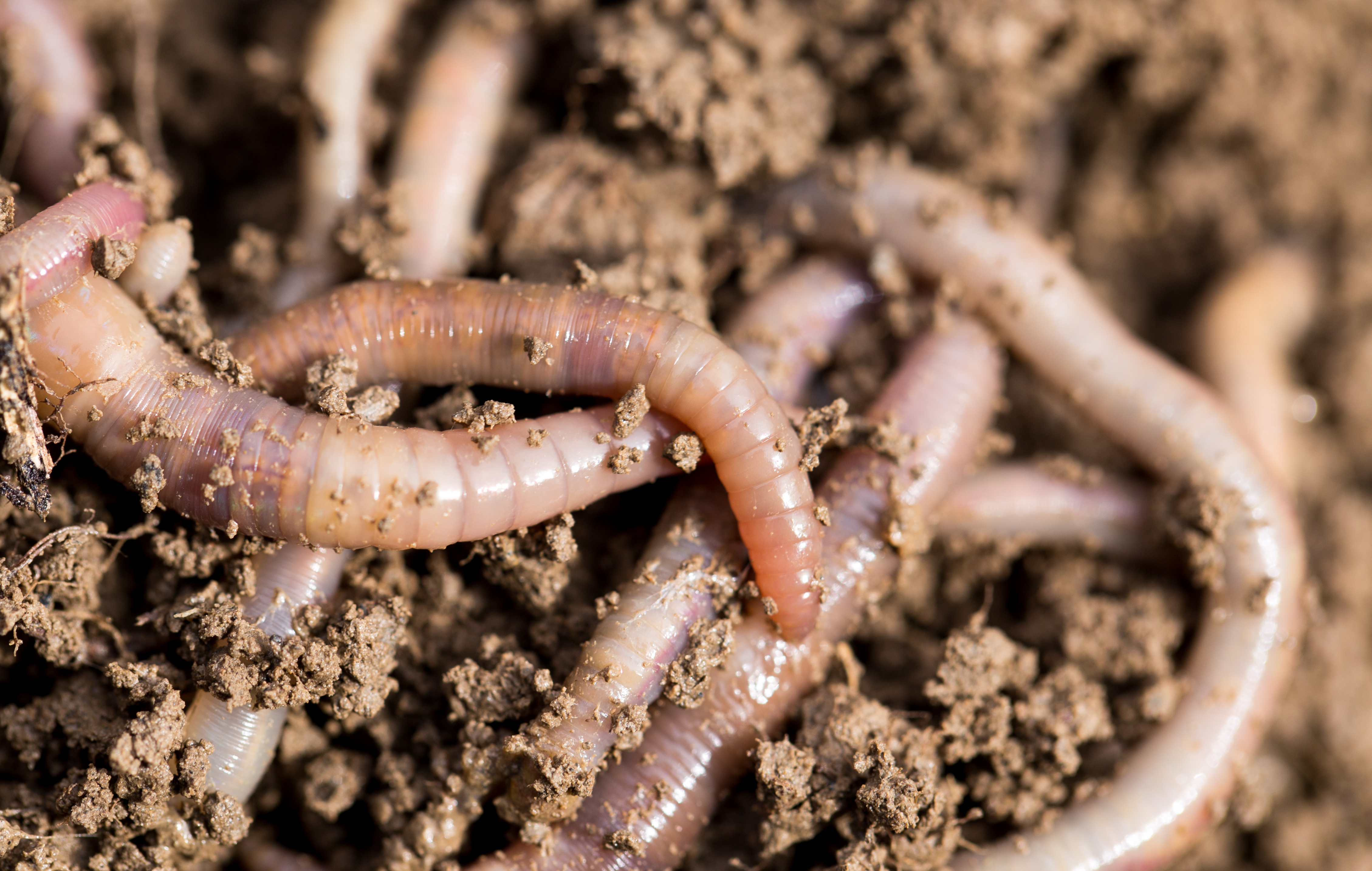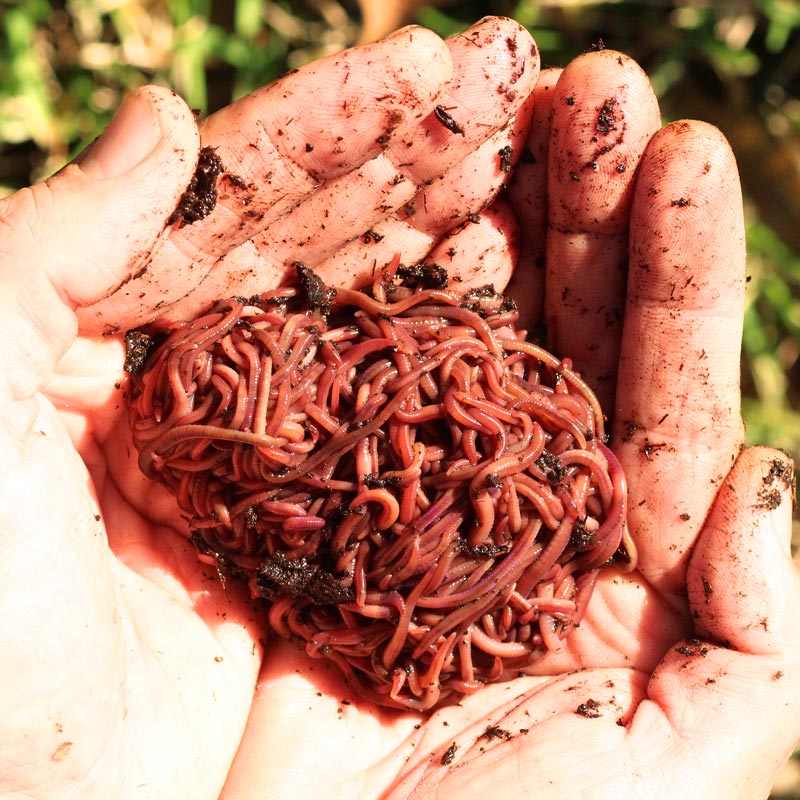Maximizing the Conveniences of Red Wiggler Worms: A Comprehensive Guidebook for Home Gardeners and Urban Farmers
In the world of sustainable horticulture practices, red wiggler worms stand as unsung heroes, silently transforming natural waste right into nutrient-rich castings that can work marvels for dirt health and wellness. As home garden enthusiasts and metropolitan farmers progressively seek economical and environmentally pleasant ways to enhance their yards, the prospective benefits of using the power of red wigglers can not be overemphasized. From reducing kitchen area waste to cultivating much healthier plants, the use of these humble animals supplies a variety of advantages. By discovering the details of exactly how to successfully look after and maximize the advantages of red wiggler worms, individuals can unlock a wide range of possibilities for boosting the sustainability and productivity of their gardening endeavors.
Comprehending Red Wiggler Worms
Red Wiggler worms, renowned for their efficient composting capabilities, are a varieties of earthworms widely used in vermiculture techniques. These worms, scientifically referred to as Eisenia fetida, prosper in decomposing organic material, making them excellent candidates for composting (Red Wiggler Worms). Red Wigglers are starved eaters, qualified of eating their own weight in organic waste daily. Their digestion procedure breaks down raw material right into nutrient-rich castings, which are a beneficial resource for improving soil and promoting plant development.
One secret feature of Red Wiggler worms is their reproductive rate. These hermaphroditic animals have both male and women reproductive organs, enabling them to reproduce quickly under favorable conditions. A fully grown Red Wiggler can create numerous children in a brief period, making certain a stable populace within a composting system.

Establishing a Worm Container
When establishing a worm container for vermiculture objectives, proper prep work and attention to information are necessary for developing a favorable setting for Red Wiggler worms. Begin by choosing an appropriate container for your worm container.

Area the worm bin in a trendy, dark place away from straight sunlight and severe temperatures. By complying with these actions, you can set up a growing worm bin that will successfully process organic waste right into nutrient-rich vermicompost for your garden.
Feeding and Keeping Worms
Ensuring a balanced and healthy diet regimen is crucial for the health and productivity of Red Wiggler worms in a vermiculture system. It is essential to prevent feeding them citrus fruits, onions, garlic, dairy products, meat, and oily foods as these can be damaging to the worms or trigger undesirable odors in the bin.
Appropriate wetness degrees are additionally essential for the wellness of Red Wiggler worms. The bed linens should seem like a wet sponge, supplying enough Check Out Your URL dampness for the worms to breathe via their skin. Frequently check the dampness degrees and adjust by adding water or dry bed linen material as required. Furthermore, keeping proper temperature level conditions between 55-77 ° F(13-25 ° C )will certainly make certain ideal worm activity and reproduction. By diligently checking their diet plan, moisture, and environmental problems, home gardeners and urban farmers can maintain a healthy and balanced and efficient Red Wiggler worm populace for composting purposes.
Harvesting Worm Castings
To successfully extract nutrient-rich worm spreadings from the vermicompost, a systematic harvesting procedure is vital for making the most of the composting advantages. The very first step in collecting worm castings is to urge the worms to move to one side of the bin.
After the spreadings have been collected, it is essential to divide any remaining worms from the castings to stay clear of hurting them during storage or application. One effective approach is to produce conical piles of spreadings under bright light. Worms will intuitively move away from the light, permitting for easy splitting up and elimination.
Lastly, the gathered worm spreadings should be kept in an awesome, dark, and dry location to keep their quality and efficiency as a nutrient-rich dirt amendment. By adhering to these steps, home gardeners and city farmers can make best use of the advantages of red wiggler worms in their vermicomposting systems.
Utilizing Worm Castings in Gardening
The incorporation of nutrient-rich worm castings right into yard dirt can significantly enhance plant development and total dirt wellness. Worm spreadings, additionally called vermicast, are an all-natural plant food generated by red wiggler worms as they damage down raw material. These like it castings are rich in vital nutrients like nitrogen, phosphorus, potassium, and helpful germs that advertise plant growth and enhance soil structure.
When utilizing worm castings in horticulture, it is necessary to blend them extensively right into the soil or use them as a top dressing around plants. The slow-release nature of worm castings makes sure a stable supply of nutrients to plants gradually, minimizing the danger of nutrient leaching and advertising lasting dirt fertility. Furthermore, worm castings aid enhance soil oygenation, water retention, and microbial activity, creating a healthy and balanced atmosphere for plant roots to prosper.

Final Thought
In verdict, the application of red wiggler worms in home gardening and metropolitan farming can significantly profit soil health and wellness and plant development. By understanding exactly how to establish up and maintain a worm bin, feed the worms appropriately, and gather their nutrient-rich spreadings, garden enthusiasts can make the most of the advantages of these earthworms.
In the realm of sustainable horticulture methods, red wiggler worms stand as unhonored heroes, silently changing natural waste right into nutrient-rich spreadings that can function wonders for dirt wellness.When developing a worm advice container for vermiculture functions, appropriate preparation and attention to detail are important for creating a conducive environment for Red Wiggler worms. The very first step in harvesting worm castings is to motivate the worms to migrate to one side of the container. Worm spreadings, additionally recognized as vermicast, are an all-natural plant food generated by red wiggler worms as they damage down natural issue. By comprehending how to establish up and preserve a worm bin, feed the worms effectively, and collect their nutrient-rich castings, gardeners can take full advantage of the benefits of these earthworms.